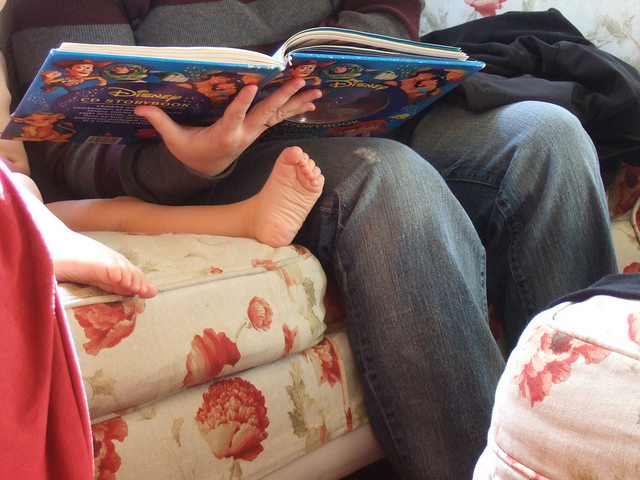The Ace Freelancer’s Guide to Asking Questions: Babysitting Questions
Questions are some of the easiest, cheapest, and most time-efficient tools you can use to get better results from your negotiations.
But people don’t use them.
When I ask freelancers why they avoid asking questions in their negotiations, I get one of two responses: they don’t know how to ask questions effectively, or they worry they’ll come off as rude if they ask too many or the “wrong kind” of questions.
Let’s fix that!
This post is the first in a series called “The Ace Freelancer’s Guide to Asking Questions.” It’s all about how you can use simple questions to improve your negotiations with clients and collaborators.
In each post, I’ll go over a particular type of question and give examples of how to use it in your negotiations.
To kick off The Ace Freelancer’s Guide to Asking Questions I’m going to start with one of my favorites: the Babysitting Question.
Why is this my favorite? Because I used to be pretty darn bad at using it.
See, when I used to babysit my nephew, Lo, and the witching hour grew close, I would ask him the very worst question possible:
“Lo, are you ready to go to bed?”
Guess what he always said? (Hint: It begins with an “N” and ends with an “oooooooooooo!”)
It wasn’t until my lovely and talented wife started joining me in my babysitting adventures that I realized the epic battle Lo and I had over going to bed was all. my. fault.
Instead of asking if Lo was ready for bed, Dylan said:
“Hey Lo, it’s almost time for bed; what do you want do first, brush your teeth or put on your pajamas?”
I watched slack-jawed as the kid I couldn’t bribe to go to bed happily ran to his room to grab his pajamas.
The difference between what Dylan and I asked Lo was that when Dylan talked to him, he was given the power to make a very specific choice, and both options were something Dylan wanted him to do.
When I talked to Lo, my question seemed broader and more generous, but the choices I gave him were basically “do something totally unpleasant” or “request something totally impractical.” It was a set-up for conflict.
Freelancers make this mistake with their clients all the time.
They ask big broad questions of their clients and then are flummoxed when the client comes back with an outrageous demand or an answer that puts the freelancer in a difficult position.
There are two major places where you can put Babysitting Questions to good use: (1) when discussing your “must have terms” in an agreement and (2) when you know more than your client.
Must Have Terms
“Must Have” terms are those things that you need in order for the deal to be worthwhile, but that the other side would deal with differently if given the choice.
Example: how quickly you get paid. For you, getting a check in two weeks might be a “must have.” For them, enh, they’d probably like more time, say six weeks.
So instead of asking “What payment terms work for you?” the better question is:
“For payment terms I can either give you my standard 15 net, or a 10/2% setup, where you’ll receive a 2% discount on the invoice if you pay in 10 days. Which do you prefer?”
See the difference? With the first question you have to hope that the client’s good nature will randomly work in your favor. With the second question, however, both options you present fulfill your interests, so no matter what the client’s choice is, you’re a-OK.
Another example: whether or not you get your rush rate for a tight turn-around job.
Instead of “What’s your budget for this job?” the better question is:
“The timeline you’ve asked for is very aggressive; in order to meet your deadline, my rush rate will be $200/hour, with a minimum deposit of $1000. If your deadline is flexible and could be pushed out two weeks, I can offer you a rate of $150/hour with a $500 deposit. Which would you prefer?”
Again, both options serve your interests and give the client a feeling of choice in how the job proceeds.
When You Know More Than Your Client
As a freelancer it can be easy to forget that one of the most important reasons your clients are hiring you is because you know more about something than they do.
But remembering that, and applying it in the work you do, is the difference between a professional and an amateur with a webpage.
Example: Your client wants a “clean” and “modern” looking website that’s “hip” and “approachable.”
Instead of asking, “Do you have any color schemes in mind?” the better question is:
“Here are three basic color schemes that fit the requirements you gave me. Will you please rate them from your most favorite to your least favorite and tell me what you like and don’t like about each?”
Instead of opening up the whole wide world of design possibilities to your client, you use your expertise and experience to guide your client to what will most likely meet their needs.
Remember: they don’t really know how colors impact a web audience. Maybe they may think that bright green text on a bright red background is fun when you happen to know that it is not.
They only know what they like. If you ask questions about what they do know, instead of broader questions about what they don’t know, you’ll get much more helpful information.
Additionally, by gathering information about their reactions to the choices you present them, you can come up with a design that is more likely to produce that “wow, just want I wanted!” response.
Babysitting questions aren’t as helpful if you know less about the topic than your client does or when you are genuinely flexible about a term in an agreement. Use them when you know what you want, or what’s best for a job, and you want to encourage your client to see things your way.
I hope you liked the first installment of The Ace Freelancer’s Guide to Asking Questions! Come back in two weeks for the next installment on questions that will get you the information you need to negotiate the best possible deals with your clients.
Categories: The Ace Freelancer's Guide To Asking Questions








Thanks for the timely reminder about choosing to ask directed questions rather than open ended ones. Another invaluable post!
Wow, I love this advice. This will be really helpful for talking to clients in the future, thank you.
Very helpeful way to spin some of these tough questions. I know I’ve been guilty of leaving clients too much choice (which ends up causing me more stress than it should). I’ll definitely be using some of these examples in the near future.